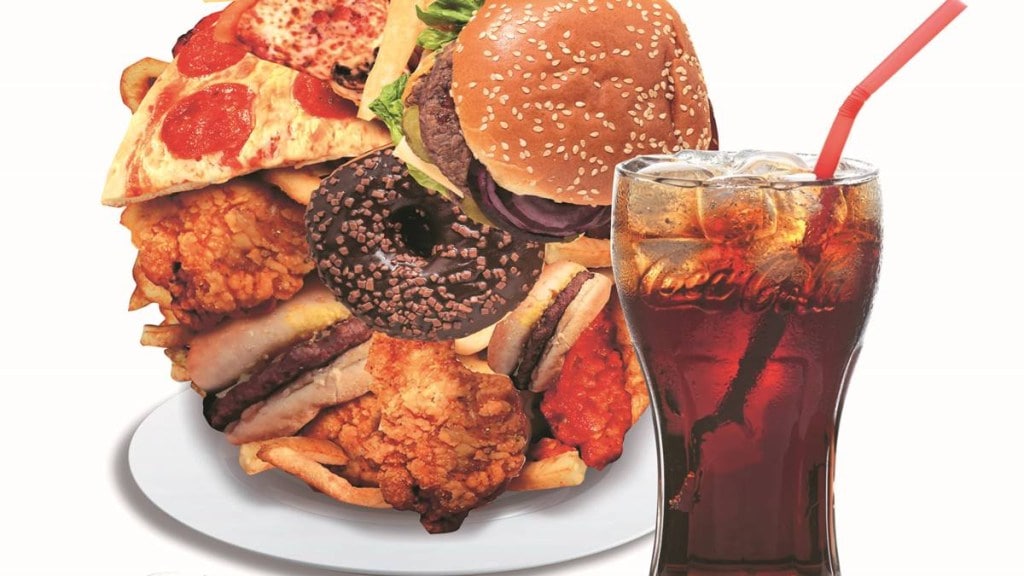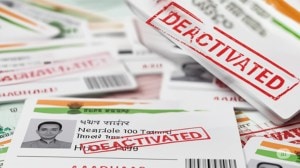Aspartame has been in the news for quite some time now. In June, reports first started doing the rounds that the common artificial sweetener was set to be declared a possible carcinogen by the World Health Organisation (WHO). Even though the world health body later, on July 14, concluded that the available data does not call for a change to the acceptable intake of aspartame, the debate rages on.
Aspartame has been used in multiple food and beverage (F&B) products since the 1980s, including diet drinks, chewing gum, ice cream and other dairy products such as yoghurt, breakfast cereals, toothpaste and medications such as cough drops and chewable vitamins.
In India, Diet Coke is the most visible product containing aspartame. Interestingly, Coca-Cola launched a 100% stevia-sweetened Coke in New Zealand in 2018. “Sweetened from a Natural Source”, “100% Stevia”, it said on the bottle of Coca-Cola Stevia No Sugar. A natural sweetener, stevia is made from the leaves of the stevia plant. In 2013, the company launched Coke Life in Argentina, and two years later in Australia, as a “lower kilojoule option for consumers”. The drink contained a mix of stevia-leaf extract and cane sugar, and “had 35% less sugar and kilojoules than the regular Coca-Cola drink”. While the company ended up largely discontinuing the drink, India was not even among the over 40 markets where the naturally-sweetened drink was even launched.
Coca-Cola is not the only one. A brief glance through the menus of top multinational beverage companies and fast food chains reflects a glaring divide between the global north and south, when it comes to healthy food options.
Plate tectonics
As per the Global Food Security Index 2022, the top performers among 113 nations in terms of food security, encompassing parameters such as availability, affordability, quality and safety, were unsurprisingly all developing countries. Of concern, however, was how the gap between the top and bottom of the list had widened since 2019, a grim indicator of rising inequality of global food systems. The indices that took the worst beating were affordability and quality. India was ranked 68th.
While several factors like climate, agriculture and economy are at play
in deciding what and how much a nation gets to eat, the inequality gets interesting when we compare what the same brand offers in developed and emerging nations.
Apart from Diet Coke, other low-calorie soda variants, such as Diet Pepsi, Sprite Zero and Fanta Zero, which are sold in India, too, contain aspartame. In 2015, Pepsico announced aspartame-free Diet Pepsi in the US. “Diet cola drinkers in the US told us they wanted aspartame-free Diet Pepsi and we’re delivering,” Pepsi vice president Seth Kaufman had said then. However, following a drop in sales, the low-cost synthetic sweetener was brought back. Akin to Coca-Cola Life, Pepsi also came up with Pepsi True, which also contained a blend of sugar and stevia.
It isn’t that companies haven’t toyed with the idea of introducing a similar option in India. Tapping on the growing concern over health, Pepsico, in 2015, tested stevia for its lemon-flavoured soft drink 7up, as per media reports. The product was being tested in Gujarat and was to become the first stevia-sweetened 7up anywhere. At the same time, Coca-Cola did a similar experiment with its orange-flavoured drink Fanta, as per reports.
Such variants are urgently needed, especially since India is often referred to as the ‘diabetes capital of the world’. With a staggering 101 million patients, India is home to the second-highest number of diabetics in the world, after China. On top of that, an estimated 254 million Indians have generalised obesity, according to a recently-published study by the Madras Diabetes Research Foundation and Indian Council of Medical Research.
Food for thought
While beverage companies have struggled with non-aspartame sweetened low-calorie healthier options worldwide, that is not so much the case with large fast food chains.
In 1996, McDonald’s became the first multinational fast food chain to set up shop in India, and it won hearts with its modest offering of McAloo Tikki. Since then, multiple quick-service restaurant (QSR) outlets have opened bases and crafted their menus catering to the Indian taste. Domino’s offers pizzas in flavours such as Tandoori Paneer and Achari Do Pyaza; KFC has a biryani bucket; Pizza Hut has a Mazedar Makhni Paneer pizza; and Subway offers Hara Bhara Patty Sub and Paneer Tikka Sub.
The menu may have become Indianised, but not inclusive.
While everyone loves a McAloo Tikki or a hearty meal of Maharaja Mac along with some fries and soft drinks, what if one is allergic to gluten? Then, one would end up staring at the menu and other people’s faces, while everyone else indulges. Or, unless one ends up having a beverage or something from the dessert options. “Several items on our menu are free from ingredients containing gluten. However, due to our kitchen set-up, we cannot guarantee that cross-contamination will not occur,” the restaurant chain says on its UK website.
Similarly, it has hardly much to offer to India’s growing tribe of vegans. However, it offers ‘vegan approved’ products, such as McPlant, a plant-based burger, wraps, veggie dippers, and nuggets, among other options, in several European countries such as England and Germany.
At the same time, McDonald’s offers an extensive range of wholesome options in countries such as the US, UK, Germany, France, Japan and Australia, among others, with offerings ranging from salads, oats and porridge to fruit bags and yoghurt. However, those customers in India who want to keep it clean and healthy would hardly find any options on the Indian menu. It was only in January last year that McDonald’s India—North and East collaborated with Dole Sunshine Company to offer a pineapple fruit bowl as a part of its Happy Meal.
A query to McDonald’s regarding its India plans for a more inclusive menu did not elicit a response.
Notably, it isn’t the only American fast food chain to display a glaring difference in its offerings in developed and developing nations.
The first Domino’s Pizza store opened in New Delhi in 1996. In less than 30 years, India has emerged as its biggest market outside the United States. In a media interview in June, Hari Bhatia, founder and co-chairman of Jubilant Bhartia Group, whose company Jubilant FoodWorks holds the master franchise for Domino’s Pizza in India, said that the QSR chain aspires to have over 10,000 stores in the country in the next two decades.
While Domino’s remains bullish on India and has developed an interesting menu taking its exciting flavours into account, inclusivity, however, is lacking. For example, it has a dedicated vegan range in Australia, a vegan-friendly pizza menu in the UK, a vegan-crust option in the US, and salads, wraps, and even soups in Japan; the same is missing from its India menu. The only healthy option here is the water.
Similarly, in 2005, American fast food chain Pizza Hut introduced an extensive salad menu across all its dine-in restaurants in the country. This menu is no longer to be found, while it offers the same in other geographies such as the UK, France, Germany and Japan, among others. It also has gluten-free and vegan options to offer in such countries, which are missing in India.
KFC, too, is big on side dishes in such geographies, with options like coleslaw, sweet corn, mashed potatoes, beans, etc, on offer. The same is, again, almost nonexistent in India. Options like salads, corn cobs, apple slices, etc, too, remain absent.
While Burger King entered India just a decade ago in 2014, it has grown in size and operates around 300 stores. However, the menu, while big on burgers and beverages, lacks the inclusivity and wholesomeness it offers in other markets, such as smoothies and salads in the United States, a vegan menu in the UK and Australia, and healthier beverage options, such as oolong tea and iced tea, in Japan.
Chew on this
This might appear harmless, especially since fast food joints in India are seen as places where one indulges. However, figures speak otherwise.
The rise of disposable income has allowed Indians to spend more, which includes eating out and ordering in. Fast food and beverages remain a big part of this. As a result, the QSR market in the country is expected to clock a compound annual growth rate of 23% between 2020 and 2025, as per a 2020 report by Edelweiss Securities. In fact, Covid played a prominent enabler in boosting preferences for QSR, as consumers switched to familiar brands, the report said.
This is crucial because of the fact that such foods, which contain high amounts of salt, sugar, and fat, are extremely detrimental to health. The Indian Council of Medical Research has said that the development of chronic diseases such as heart diseases, diabetes and liver diseases is multifactorial, and consumption of junk and processed food is one of the factors. Also, there are numerous studies that have indicated that eating foods that are high in fat, sugar or salt may increase the risk of obesity and non-communicable diseases.
This is concerning. As per a 2017 report, the proportion of chronic diseases has increased in India from 30.5% to 55.4% between 1990 and 2016. Obesity is another growing problem. As per the latest National Family Health Survey data published earlier this year, nearly 1 in 25 men, and 1 in 16 women in India is obese. Also, Indians are becoming fatter over the past 15 years, the data showed.
In light of this, Indian consumers can benefit from healthier and more inclusive menus at their favourite fast food chains. A growing awareness of health and allergens also opens more room for innovation, something that multinational giants can consider.
Also, multinational brands attempting to cash in on the huge market opportunity of emerging nations but with a basic product portfolio need a serious rethink as third-world countries are no longer home to ignorant or unaware populations. An Ogilvy Wellness Gap global survey in 2020, conducted across four continents, indicated that 77% respondents wanted wellness in not just food or cosmetics, but airlines, cars and banking as well.
Brands should also remember that India is the world’s fastest-growing health foods market, as per a 2022 report by investment banking services firm Avendus Capital, which predicts that the health-conscious consumer base in the country will rise to 176 million in 2026 from 108 million in 2020. Even if you ignore the data, foreign brands can just take a look at their domestic competitors for a reality check. Vegan, organic, millet, multigrain, natural are words on almost every menu, and, needless to say, Indians are gulping it all down.








